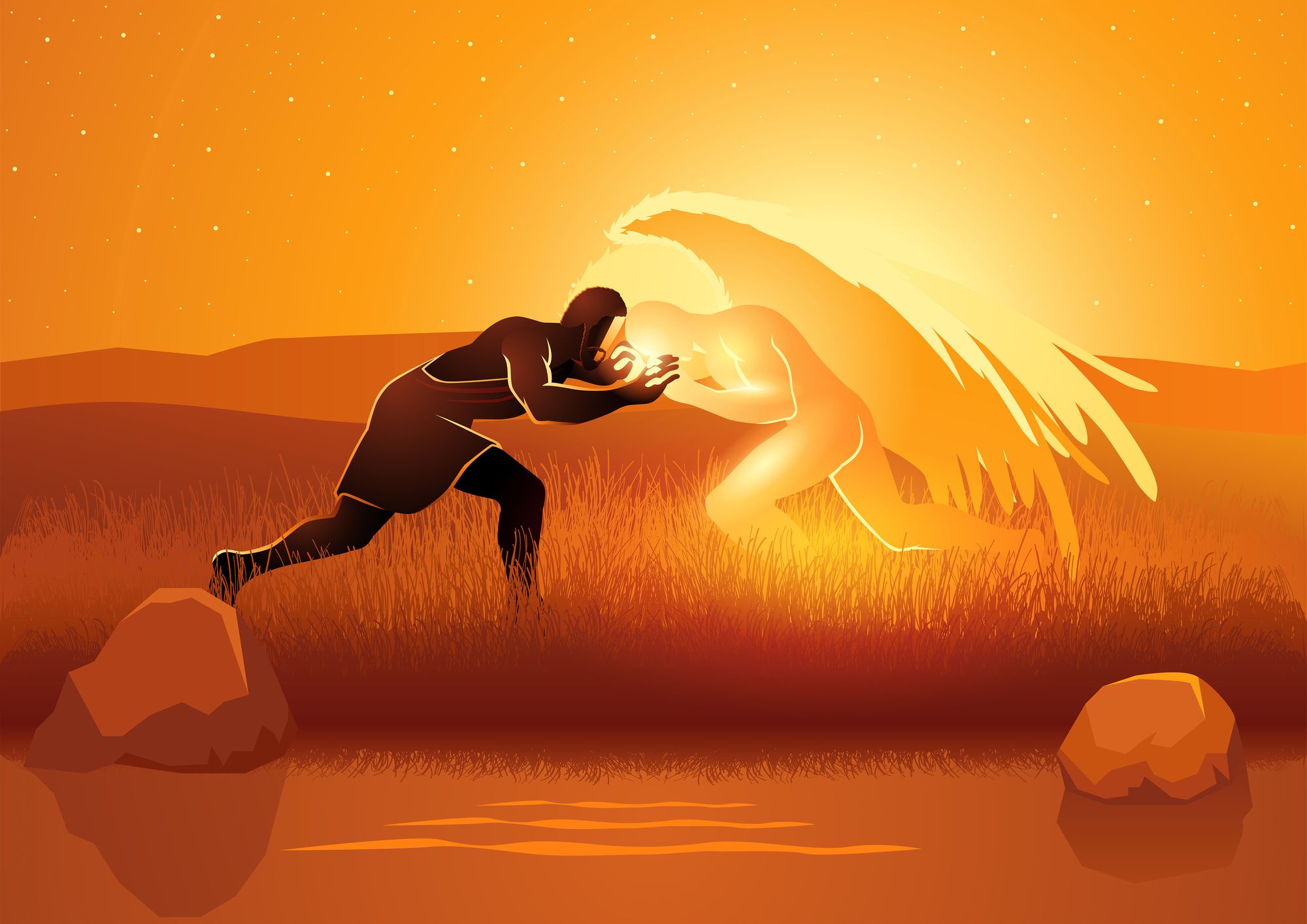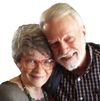Jordan's Long History as a Place of Refuge - Part 1
We reference Bible characters to inform you of the long-standing pattern about the western border area in present-day Jordan where people fled for refuge.

Many have asked why we named our website “Refuge in Jordan.” This blog will tell you.
After the land of Israel, this small country to its east is the place where most biblical history occurred. Other locations include Egypt, Syria, Iraq, Assyria, and more.
Since Jordan is the focus of our blog, the content of this post will be about what took place there historically, as well as what goes on here today.
Let’s begin with mentioning people in the Bible who spent time in what was known as “beyond Jordan (the river),” adding some detail later about why they traveled there, and giving encouragement for you to consider this desert land as an end-time destination.
We reference Bible characters to inform you of the long-standing pattern about the western border area in present-day Jordan where people fled for refuge. Even today, folks in distress from many nations find an open door and hospitality awaiting them here.
Lot was the first well-known biblical character to live in Sodom in present-day Jordan.
Abram/Abraham may have been the second when he rescued his nephew Lot and other citizens of Sodom. We’ll deal with whether he actually went there in the details below.
Ishmael and Esau lived in the southwest part.
Jacob/Israel with his wives, their servants, and their eleven children moved from Haran to the area in northern Jordan where God changed his name and he briefly met his brother Esau.
Moses, Miriam, Aaron, and Israel of the Exodus spent at least two years in present-day Saudi Arabia and thirty-eight years in the wilderness of today’s Hashemite Kingdom of Jordan before conquering Canaan.
David, before he became Israel’s monarch, arranged for his parents’ protection from King Saul in Moab in the midsection of present-day Jordan. After he became the ruler, he again fled to a city across the Jordan River when his son Absalom attempted a coup d’état.
A remnant of Judah fled there during the Babylonian siege of Jerusalem.
Jesus/Yeshua escaped from some of the religious leaders when they threatened to stone Him for blasphemy. John 10:40-42 says, “And [Jesus] went away again beyond the Jordan River into the place where John at first baptized; and there he abode. And many came unto him, and said, John did no miracle: but all things that John spake of this man were true. And many believed on him there.”
John the Baptist not only immersed people on the east side of the Jordan River (including Jesus Himself), but tradition tells us Herod Antipas incarcerated and executed him there at Machaerus.
Christians of the first century fled to the mountains on the east side of the river when the Roman army destroyed the Temple in Jerusalem, an event both the prophet Daniel and Yeshua warned of.
The reason we mention these instances is to show that Jordan represents the “other” Holy Land and to affirm history and prophecy will converge again.
Now for the details about each of our characters.
Since the Bible specifically states that Lot chose the well-watered plains of the Jordan which flows into the Dead Sea, that can only be at its north end.
Lot
When Abram left his home in Mesopotamia for the Promised Land, he traveled with his nephew Lot. Soon after they arrived in Canaan, severe famine overtook the countryside, forcing the two families to flee to Egypt for survival.
When they returned to their former campsite in Bethel, they found their animals had increased to the point there was not enough grass for both of their herds and flocks to feed in the same area. After strife broke out between Abram’s and Lot’s herdsmen, they parted company.
Lot chose to live on the well-watered plains of the Jordan River and later moved his family to Sodom. “Then Lot chose him all the plain of Jordan; and Lot journeyed east: and they separated themselves the one from the other.” (Genesis 13:11)
We must be as specific as possible about the location Lot chose, because even today, there is disagreement about the placement on many biblical maps. We have to take into account every hint of information the Bible itself records.
Some locations, once indicating a certain place, are no longer considered accurate. Newer discoveries put the former site in question or significantly suggest another.
Since the Bible specifically states that Lot chose the well-watered plains of the Jordan which flows into the Dead Sea, that can only be at its north end. Lot pitched his tent toward or by Sodom. The only place Sodom and its sister cities could be is at the northeast end of the Dead Sea.
Many Bible maps will show it at the south end. Today, Israel’s highway 90 sports an exit sign marked “Sodom” near the southwest end of the Dead Sea. But there are no well-watered plains of the Jordan River at that location. It stops when it enters the Dead Sea at the north entrance.
Dr. Steven Collins is the chief archaeologist and director of the Tall El-Hamman Excavation Project in Jordan. He and his co-author believe he has found the lost city of Sodom and have documented his findings in the 2013 book, “Discovering the City of Sodom.” You can find it on Amazon.
For more information about Dr. Collins and his work, visit his website, www.drstevencollins.com. We are excited about our upcoming trip to this site in February, where we will meet Dr. Collins and enjoy a personal tour of the dig.
Abraham
It is possible he went to Jordan when he rescued Lot from the invading armies that took Sodom’s inhabitants. In Genesis 14 and 15, Abraham, King Bera of Sodom and King Melchizedek of Salem (Jerusalem) met at the valley of Shaveh, which is a low-lying plain.
There is a significant lowland area at the north end of the Dead Sea. The Hebrew word for this large circular place is “kikkar,” a description of being like flatbread or a coin.

Abraham lived in Hebron only a few miles south of King Melchizedek’s Salem. Bera, king of Sodom, lived even a shorter distance from the kikkar. Genesis 14:17 explains, “And the king of Sodom went out to meet him after his return from the slaughter of Chedorlaomer, and of the kings that were with him, at the valley of Shaveh, which is the king's dale.”
The word dale in Hebrew is emeq (AY-meck) and means a broad depression.
Since the text is ambiguous about where the “king’s dale” was or to which king it belonged, this kikkar is an excellent candidate for where Abraham may have been in Jordan.
The circular plain spans both sides of the Jordan Valley. In either case, Abraham had dealings with several people who lived across the river.
Later, at the extinction of Sodom, Gomorrah, Admah (ahd-MAH), and Zeboim (zeh-bo-EEM), Lot persuaded the angel of destruction to allow him to go to the neighboring little city of Zoar (TSO-ar) for protection. However, he was uncomfortable even there and went farther to a cave where he hid.
Lot, the only “righteous” man in Sodom, found refuge in the mountains of Jordan from the wrath of Yehovah (yeh-ho-VAH)when He poured it out on the sinful inhabitants nearby.
Like Noah and Lot, the last days will reveal both great destruction of the ungodly and great salvation for the godly at the same time.
Ishmael and Esau
Ishmael, son of Abraham by Hagar,moved to southern Jordan to the mountains of Seir (say-EAR). Later, Jacob’s brother Esau married one of Ishmael’s descendants and lived in the same region.
Information in the ten verses that mention the wilderness of or the mountain of Paran (puh-RAHN) where Ishmael lived, is not specific enough to pinpoint this area. It could be anywhere between southwest Israel to northwest of Saudi Arabia to east of the Dead Sea. Other wildernesses are in this region as well, the boundaries of which are uncertain. Genesis 21:21 says, “And he (Ishmael) dwelt in the wilderness of Paran: and his mother took him a wife out of the land of Egypt.”
Seir, the home of Esau, is easier to locate. It’s in the southwest mountains of Jordan south of the Dead Sea.“And Jacob sent messengers before him to Esau his brother unto the land of Seir, the country of Edom.” (Genesis 32:3)
Jacob/Israel
When Jacob returned from living in exile from his father Isaac, he feared meeting his brother because Esau said he was going to kill him. He spent a few nights in Jordan at the biblical location he named Mahanaim (ma-ha-na-EEM), two camps. Yehovah protected him there from his brother’s four-hundred-man army. The news about Esau made Jacob very nervous, so for safety reasons, he divided his household into two camps. Their reunion turned out okay, but Jacob found divine refuge in Jordan.

Next week, we'll continue telling the stories of biblical characters who fled to the land beyond the Jordan for refuge.
Al and Anita
